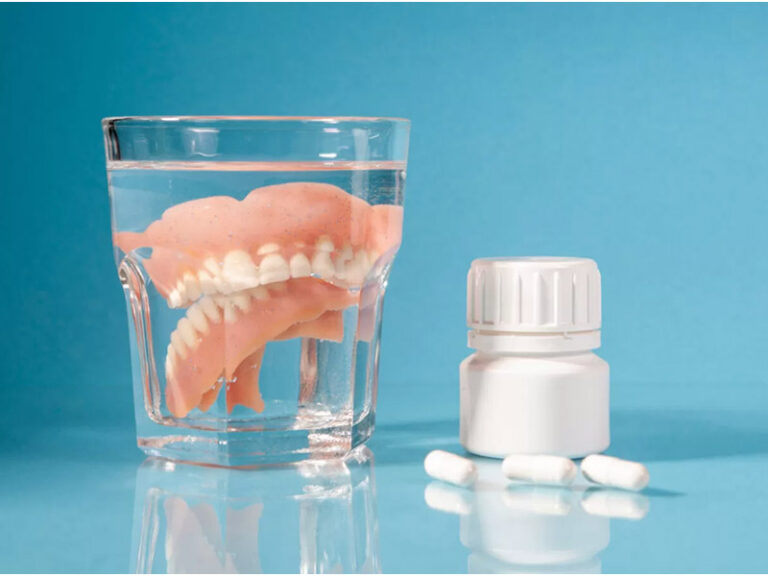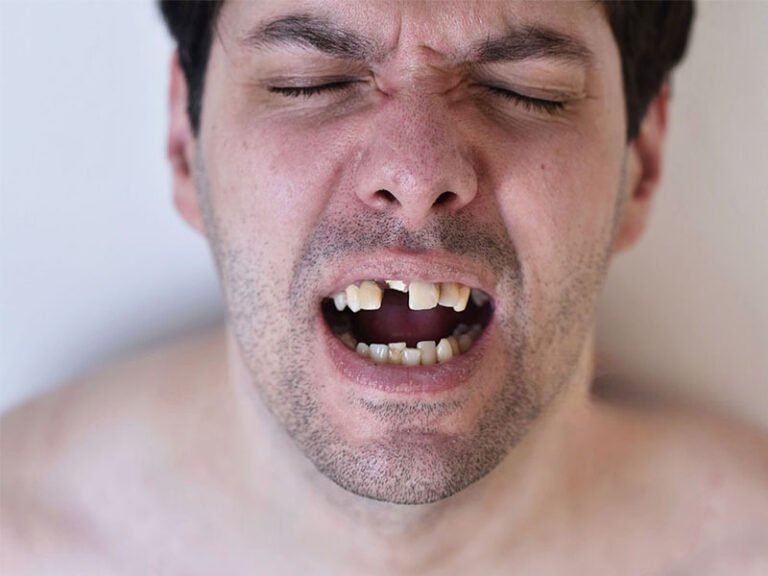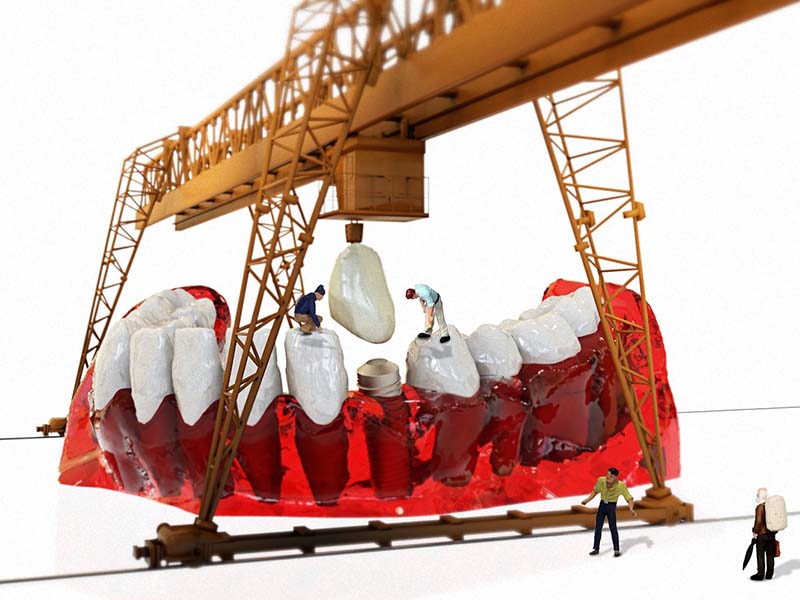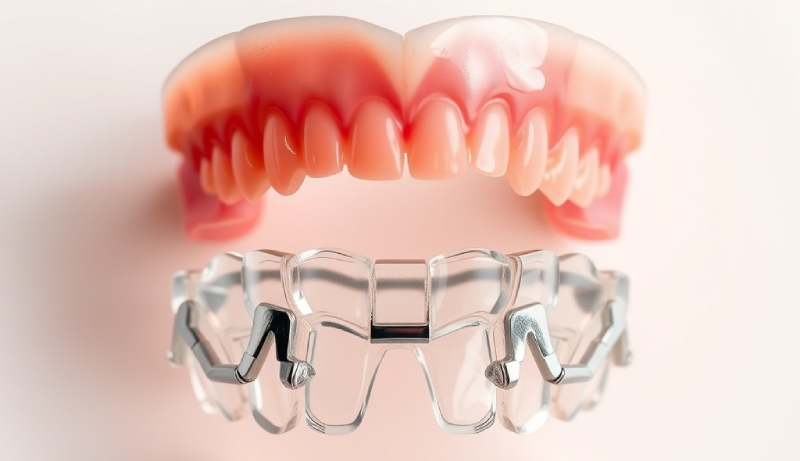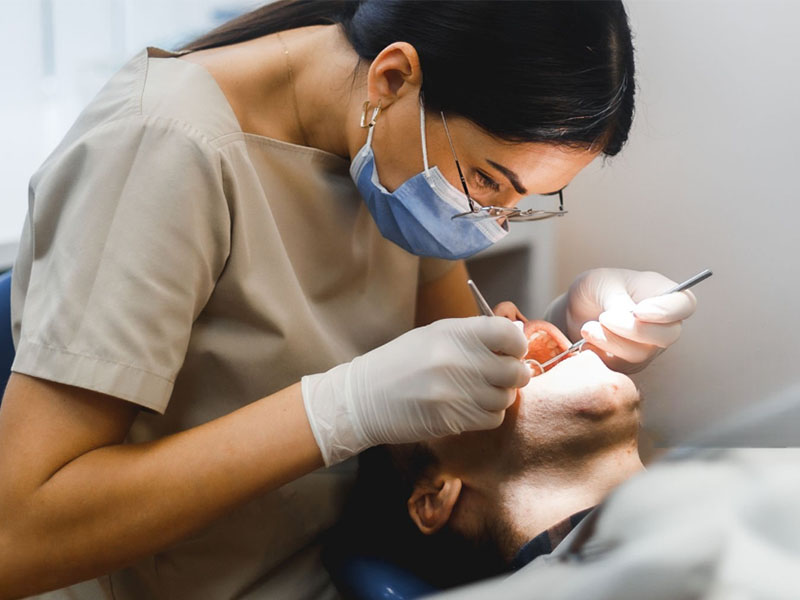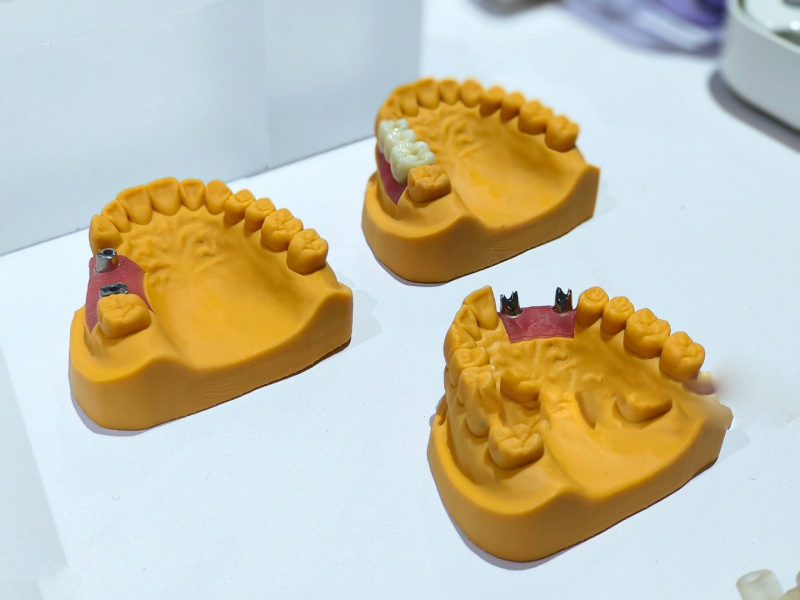
Loose Dental Implant Crowns: A Simple, Patient-Friendly Guide
You spent time and money on your dental implant, and at first, it felt solid and strong. Now, though, something seems off. Maybe you notice a bit of movement when you chew, hear a light clicking sound, or you can actually feel your implant crown shift if you touch it with your tongue. That uncomfortable sinking feeling? You aren’t alone. It’s normal to worry.
If your dental implant crown feels loose, you’re in the right place. Don’t worry—this guide explains everything in plain English. Think of it as a chat with a friendly, helpful dentist. Together, we’ll look at what’s going on in your mouth, why it might be happening, and what you can do about it. The good news? Most of the time, this is pretty easy to fix.
Table of Contents
A Quick Look: What Is a Dental Implant?
Let’s keep it simple. A dental implant is kind of like building a post in the ground for a fence. It has three main parts:
- The Implant: This is the metal screw (usually titanium) that the dentist puts into your jawbone. It acts like the root of your old tooth. Think of this as the concrete base in the ground.
- The Abutment: This is a small connector that sticks out of the implant, right at your gum. It connects the implant to the tooth part you see.
- The Crown: This is the fake tooth that you see and use. It’s made in a lab (usually from porcelain or zirconia) and attached to the abutment. This is just like the fence post you see above the ground.
When an implant feels loose, it’s almost always just the crown or abutment that’s moving. The implant in your bone (the screw part) coming loose is much less common and much more serious.
The Big Question: Is The Crown Loose or Is The Implant Itself in Trouble?
This is the most common worry, and it’s a really important question.
A loose implant crown is usually a mechanical problem. In simple terms, it means a man-made part—usually a tiny screw or the glue (cement)—is loose or broken. The “foundation” (the implant in the bone) is usually fine. This is the most common problem, and it’s usually easy to fix.
A loose implant (meaning the screw in your bone is moving) is a biological problem. This means your bone and gums aren’t holding the screw tightly anymore. It might happen if the implant never fused to the bone properly at the start, or if you get an infection in the future. This is more serious but much less likely.
How do you know which one you have? Truth is, you can’t be sure without a dentist checking. But if it feels a little loose, doesn’t hurt, and happened slowly, it’s probably just the crown or the screw—not the whole implant.
Why Is This Happening? Reasons Your Implant Crown Might Be Loose
So why is your dental implant crown wiggling? Most of the time, it’s one of a few simple reasons. Your dentist will look for these.
1. The Abutment Screw is Loose
This is the most common reason by far. There’s a tiny screw that holds the crown and abutment together, and sometimes this screw can loosen up.
It’s a lot like the nuts on a car tire. If a mechanic doesn’t tighten them enough or if they’re shaken a lot, they can come loose. The same thing can happen in your mouth.
Why would the screw loosen?
- Biting Too Hard: If you grind or clench your teeth, especially at night, you put a lot of pressure on your implant. Over time, this can loosen the screw.
- Not Tightened Enough at the Start: If the dentist didn’t tighten the screw to the company’s recommended level, it can come loose later.
- Parts Don’t Fit Perfectly Together: If the parts from the dental lab aren’t a perfect fit, even tiny spaces can let things move a little, and that loosens the screw.

2. The Cement (Glue) Has Worn Out
There are two main ways to stick a crown onto an abutment—either with a screw (“screw-retained”) or glue (“cement-retained”).
If yours was held on with glue, a loose crown might mean the cement has given out:
- Cement Wears Away: Over a few years, the glue can slowly wear away, leaving the crown loose.
- Glue Didn’t Stick Right: If the spot was wet or dirty when the dentist glued it, the hold may not have been good from the start.
Too much extra glue can also get squished under your gums, causing irritation or even infection. That’s why many dentists like screw-retained crowns—they’re easier to clean and fix if needed.
3. Something is Broken
This isn’t as common, but it does happen—mostly if you bite really hard or have bad grinding.
- Broken Screw: The tiny screw can break. This makes the crown and abutment really loose, and the broken part stays in the implant. It takes special tools to fix this one.
- Broken Abutment: The connector post can snap, though it doesn’t happen often.
- Broken Crown: The visible part cracks or chips badly. Little chips are usually OK, but big breaks can cause looseness.
4. Trouble With Bone or Gums (Less Common, More Serious)
This is when the problem isn’t with the crown or screw, but the implant in your bone.
- Infection Around the Implant: Called peri-implantitis, this is like gum disease for implants. Bacteria cause your gums and bone to shrink away, so the implant loses support and starts to wiggle. Signs include red, swollen gums, pus, or bleeding.
- Implant Never Fused Well: Rare, but it sometimes happens if your bone and the implant never really connected the way they should have. Usually, dentists find this out early on.
Things like smoking, uncontrolled diabetes, bad mouth care, and some medicines can make these problems more likely.
How to Notice Something’s Wrong
Your body usually gives you clues when something isn’t right. Here’s what to watch for with a loose implant crown:
- It Feels Wobbly: The most common sign. You feel movement when you bite, chew, or move your tongue against the tooth.
- Clicking Sounds: Sometimes you’ll hear a light click or tap when you chew.
- Mild Soreness: The gum or area around the crown may feel a bit sore or pressed when you bite. Sharp pain usually means there’s something more going on.
- Food Gets Stuck: You notice food collecting around the implant when there never used to be space.
- Gap at the Gum or Swollen Gums: You can see a small gap between the tooth and your gums, or gums look red and puffy.
If you have these signs, don’t poke or push on the tooth—just call your dentist.

What to Expect at Your Dental Visit: Figuring Out the Problem
At your dental check, your dentist will play detective to find out what’s happening. The steps are pretty easy and don’t hurt.
- They’ll Ask Questions: Your dentist wants to know when the problem started, what it feels like, and whether you grind your teeth or have had any pain or infection.
- They’ll Check Your Mouth:
- Look Around: They search for swelling, gaps, or wear on the crown.
- Feel the Tooth: By gently pressing with their finger or an instrument, they can check how and where it moves.
- Check Your Bite: They might have you bite down on some special paper to see if your bite is putting too much force on the implant.
- X-rays: A simple X-ray can show the connection between the crown, screw, and implant, and whether your bone looks healthy. Rarely, for tough cases, they might use a 3-D picture (CBCT scan), but usually, a regular X-ray is enough.
How Dentists Fix It
Once your dentist knows what’s wrong, fixing it is usually quick and easy.
If the Abutment Screw is Loose…
This is the best news—it’s an easy fix in most cases.
- What’s Done: The dentist finds the tiny screw hole in your crown (usually hidden either on the biting surface or the back), opens it up, removes the old screw, cleans inside, puts in a new screw, and tightens it to the right level. Then they fill up the hole with a tooth-colored material. You’re usually done in 30 minutes or less.
If the Cement Has Failed…
- What’s Done: Your dentist gently takes the crown off, cleans away all the old glue and any leftover bits, then re-cements it, making sure no glue is left behind.
If Something’s Broken…
This might take a bit more time or extra steps.
- What’s Done: If a screw is broken, your dentist uses special tools to get it out, then puts in a new one. If the abutment or crown is broken, they may need to send a mold to the lab to make a new part.
If There’s an Infection or Gum Problem…
If there’s a problem with your gums or bone (like peri-implantitis), fixing the crown won’t help until the infection is cleaned up.
- What’s Done: The dentist will deeply clean the area, sometimes using medicine or even a small bone graft if bone is missing. Once everything’s healthy, they can work on the crown.
A Real-Life Story:
A 52-year-old woman came in because her implant tooth in the back made a “click” every time she chewed. She admitted she ground her teeth at night and didn’t always wear her nightguard. The crown moved a little, and her X-ray showed a tiny gap—her abutment screw was loose.
What we did was simple: We removed and replaced the screw, tightened it to the right level, and smoothed out her bite a bit to take some pressure off. She also promised to wear her nightguard every night after that. At her check-up, everything was solid and she was happy again. A quick, painless fix kept her implant in great shape.
How to Prevent This From Happening Again
The easiest way to deal with a loose implant crown is to not let it happen in the first place. Here’s how you can help your implant last:
- Take Care of Your Mouth: Brush twice a day and really focus on the area where the crown meets the gum. Floss daily (using floss especially for implants or a water flosser helps).
- See Your Dentist Regularly: Don’t skip your check-ups! Your dentist will check the crown, your bite, and the health of the gum and bone. Early fixes are always easier.
- Wear Your Nightguard if You Grind: If you know you clench or grind your teeth (bruxism), a custom nightguard is a must. It protects your implant (and the rest of your teeth) from too much pressure.
- Pick an Experienced Dentist: The skill of your oral surgeon and your dentist matters. When they use good quality parts and do careful, precise work, your implant has a better shot at lasting many years.
Should I Worry? When Is It an Emergency?
A loose implant crown isn’t usually a full-blown emergency, but it’s also not something to ignore. You don’t need to go to the hospital, but you should call your dentist soon and get it checked.
Call your dentist right away if:
- You have a lot of pain or your cheek or gums are swollen
- You see pus or other signs of infection
- The whole crown and connector post fall out
Eating on a loose crown can cause bigger problems and might turn an easy fix into something longer and more costly.
Bottom Line: What Should You Remember?
Finding that your dental implant crown is moving can be scary, but here’s what’s important:
- Don’t panic. It’s most likely a simple, mechanical issue—not the end of your implant.
- This is fixable. Most problems are quick and painless to repair.
- Don’t ignore it. Go see your dentist sooner—not later.
- You can help your implant last. Brush, floss, go to your regular check-ups, and wear your nightguard if you need one.
A loose crown is really just a small speed bump, not a disaster. By getting it checked and fixed, you protect your smile and your investment for years to come.


